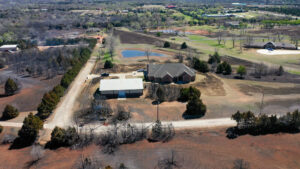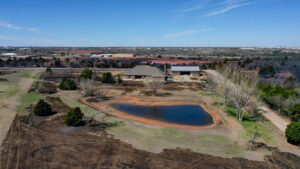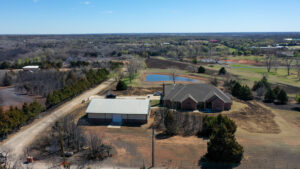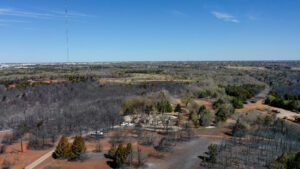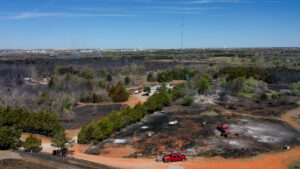Built to Withstand: How ICFs Play a Critical Role in Fire Resilient Construction
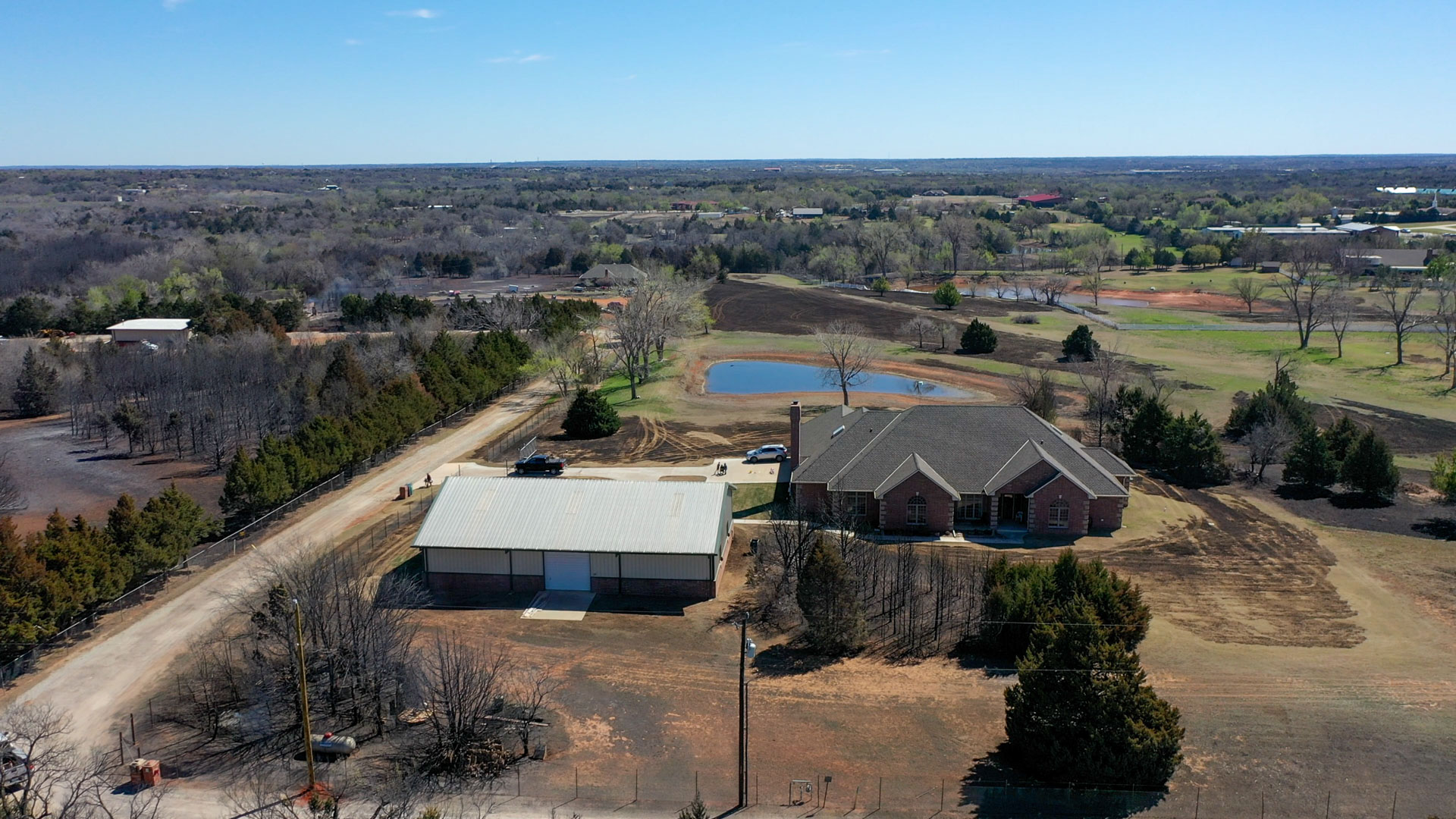

In 2023, Oklahoma City faced a devastating wildfire season, with 97 recorded blazes destroying 76 structures and winds reaching 50-60 MPH. Amidst this destruction, one home stood resilient: BuildBlock Founder Mike Garrett’s ICF (Insulated Concrete Form) home. While neighboring houses were reduced to ash, Mr. Garrett’s house sustained only minor window damage, a testament to its robust construction.
The Anatomy of Survival
So, what made this ICF home resilient against the flames?
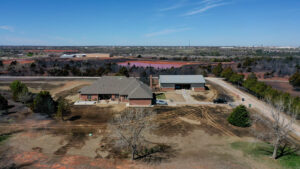 The house boasts ICF walls with an exterior cladding of brick. This means the primary exterior structural walls are concrete, and the ICF foam is further protected by a non-combustible material – brick. Unlike most Oklahoma homes with vented attics, this house utilizes a spray foam roof system that fully encapsulates the building envelope. This eliminates the need for ventilation, preventing embers or flames from penetrating the attic. Even with the increased conditioned volume, the home’s exceptional insulation and a geothermal system keep utility bills remarkably low. An ERV system also ensures a continuous supply of fresh air.
The house boasts ICF walls with an exterior cladding of brick. This means the primary exterior structural walls are concrete, and the ICF foam is further protected by a non-combustible material – brick. Unlike most Oklahoma homes with vented attics, this house utilizes a spray foam roof system that fully encapsulates the building envelope. This eliminates the need for ventilation, preventing embers or flames from penetrating the attic. Even with the increased conditioned volume, the home’s exceptional insulation and a geothermal system keep utility bills remarkably low. An ERV system also ensures a continuous supply of fresh air.
Defensible Space and Smart Design
The property’s landscaping also played a crucial role. A grove of trees 30-40 feet from the house generated enough heat to crack some outer window panes, but not enough to cause them to completely fail. Additionally, the house had very little landscaping or foliage directly against the structure and was primarily surrounded by grass. During the fire, the grass burned quickly and moved on, since there was little fuel directly around the house. The home only needed to withstand a 5-10 minute onslaught of flames and embers, which it did remarkably well.
The key takeaways from this incredible story are clear: a well-sealed building envelope and the use of non-combustible materials were paramount. Even when completely surrounded by fire, the structure did not ignite. Furthermore, defensible space and meticulous landscaping maintenance by Mr. Garrett ensured there was minimal fuel to compromise the building envelope.
While no structure is entirely impervious, the Garrett home is a powerful example of how smart design principles, aligned with the environment, can make a monumental difference. This success story in the face of disaster showcases the protective power of ICF construction.
Want to learn more about building a resilient home? Watch How To Build a Fire Resistant ICF Home for more design strategies and steps you can take to help better protect your home.
Questions? Reach out to us at [email protected] or visit buildblock.com.

